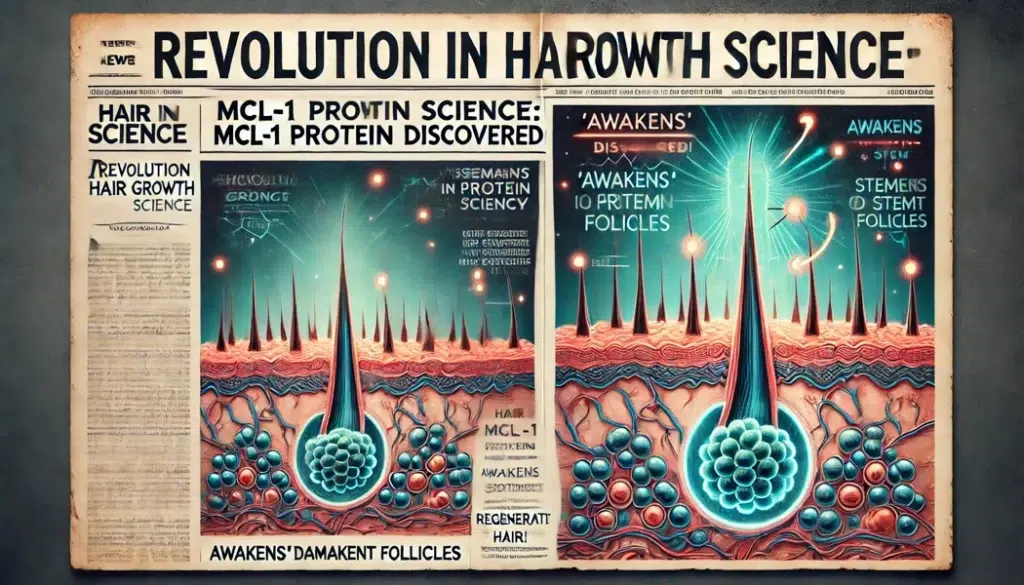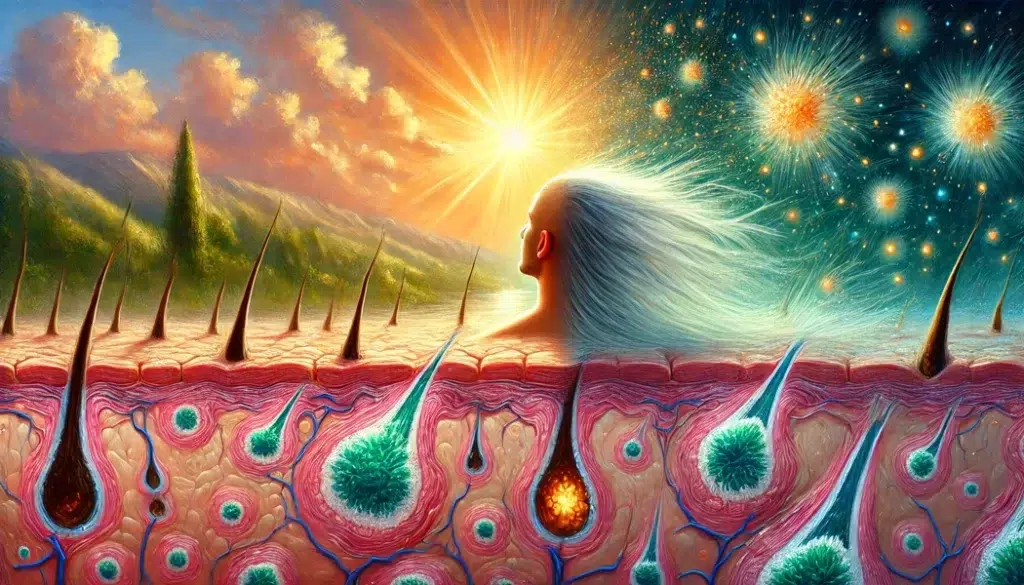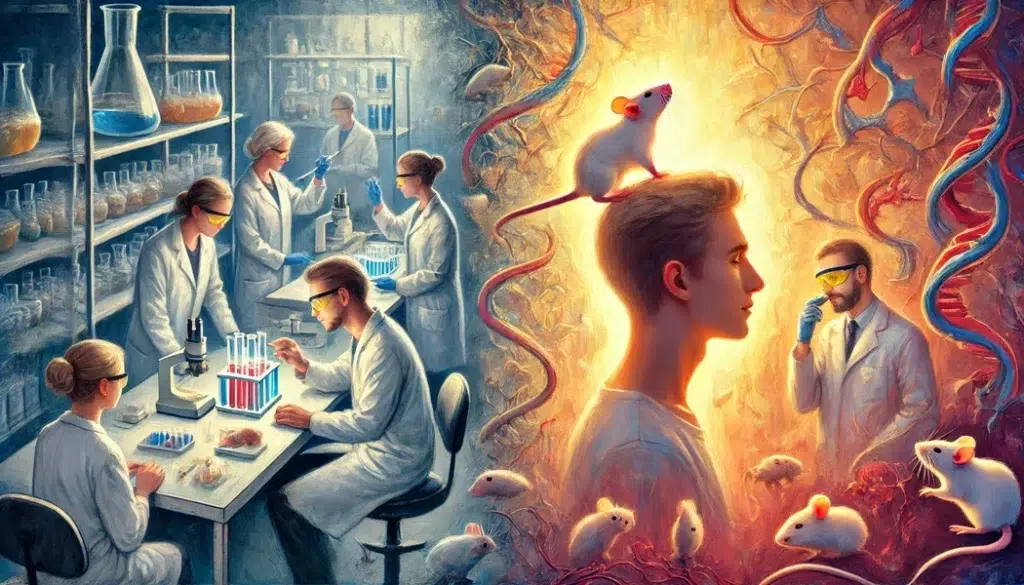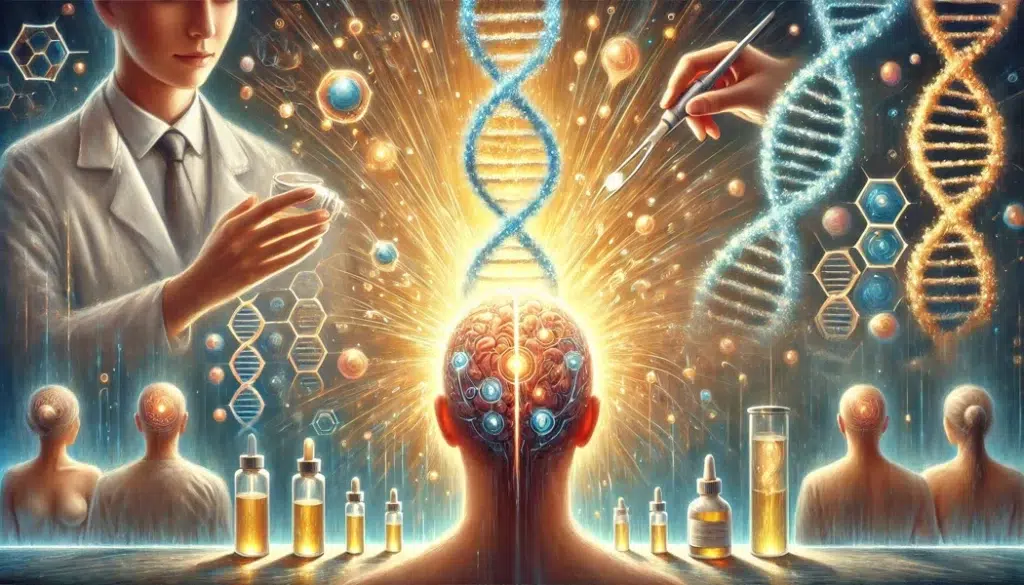🧠 A Revolution in Hair Growth Science: A Key Protein Under the Microscope
In the world of hair growth research, true revolutions rarely announce themselves with fireworks—but when scientists discover a protein that quite literally decides whether your follicles will “wake up” or remain dormant forever, it’s time to pay attention.
A recent study Read the full study on Nature.com has brought focus to a protein called MCL‑1, which plays a critical role in sustaining hair follicle stem cells—the very cells responsible for generating new hair growth.

Unlike treatments that merely stimulate existing strands, this breakthrough opens the door to permanent hair regeneration at the root level—by preserving the very cells that determine whether your hair grows… or disappears. In this post, we’ll break down what MCL‑1 is, how it works, what the science says, and—most importantly—what this means for you, the reader asking: “Could this really be the game-changer?”
🧬 What Are Hair Follicle Stem Cells and Why Are They So Important?
Hair follicle stem cells (HFSCs) are the powerhouse behind hair regeneration. Nestled in a specialized niche at the base of each hair follicle, these cells remain in a state of rest—until they’re activated during the hair growth cycle. Once triggered, they rapidly multiply and transform into the different types of cells needed to form new hair strands.

But here’s the catch: while they’re potent, they’re also vulnerable. Stress, aging, hormonal shifts, and inflammatory signals can disrupt their activity or push them into a permanent dormant state. When that happens, your body still has hair follicles—but they’re no longer producing new hair. That’s why HFSCs are a primary target for advanced hair restoration therapies. Protecting and reactivating them could mean the difference between thinning hair and visible regrowth.
If you’re curious about what damages these powerful stem cells in the first place, don’t miss our deep dive into how oxidative stress affects your hair and scalp health.
🧪 The Role of MCL‑1: Keeping Stem Cells Alive and Active
MCL‑1 is a protein that belongs to a family of molecules known for regulating cell survival. While most proteins in this group are involved in preventing unwanted cell death, MCL‑1 plays a much more specific role in the context of hair: it ensures that hair follicle stem cells stay alive, functional, and ready to regenerate.

In the recent Nature Communications study, scientists discovered that when MCL‑1 is missing or suppressed, stem cells inside the hair follicle begin to die off or fall into an irreversible sleep-like state. Without this vital protein, the regeneration cycle stops—and so does new hair growth. In contrast, when MCL‑1 is active, these stem cells remain healthy and responsive, allowing hair follicles to enter new growth phases as needed.
This finding reframes how we view hair loss—not just as a matter of hormones or inflammation, but as a loss of regenerative potential at the cellular level. Supporting MCL‑1 function could, therefore, be a game-changer in how we approach long-term hair restoration.
🧫 What Happens When MCL‑1 Is Missing? (Mouse Experiment Insights)
To understand how crucial MCL‑1 is for hair health, researchers conducted a controlled experiment using genetically modified mice. These mice had their MCL‑1 protein selectively deactivated in hair follicle stem cells. The results were striking.
Within weeks, the mice began to show signs of hair thinning—not because the hair was falling out, but because the follicles had stopped producing new hair altogether. Under the microscope, it became clear that the stem cells had either died or become inactive. The hair follicles remained structurally present, but their regenerative engine had shut down.
This type of hair loss is fundamentally different from what we typically see with DHT-related miniaturization or temporary shedding. It’s a collapse of the follicle’s ability to renew itself. These findings highlight MCL‑1 as more than just another protein—it appears to be a biological switch that determines whether hair growth can continue or not.
🧪 How Close Are We to Real-World Treatments for Humans?
“Super research… but when will this be available to me?”
That’s the question on everyone’s mind—and it’s a fair one. While the results from mouse models are groundbreaking, it’s important to understand that this research is still in its early stages. So far, the protective effects of MCL‑1 have only been observed in animal studies, and no human clinical trials have begun yet.

That said, the discovery has sparked strong scientific interest because it opens up a brand-new therapeutic pathway: preserving or reactivating the body’s own follicle stem cells. This could one day lead to treatments that not only prevent further hair loss but potentially reverse it at the root.
So, how long until we see this in action? While no precise timeline exists, advances in gene-targeted therapies and protein regulation suggest that such solutions could become available in the foreseeable future—especially as similar mechanisms are already being explored in other regenerative medicine fields.
The science is moving fast. And for once, it’s moving in the right direction.
🧬 Future Treatments: What Could MCL‑1 Therapy Actually Look Like?
If MCL‑1 proves to be as essential in human hair follicles as it is in mice, future treatments could take several innovative forms. One possibility is topical therapy—a lotion, cream, or serum designed to enhance MCL‑1 expression in the scalp. This would likely involve advanced delivery systems capable of penetrating the skin barrier and reaching the follicle stem cells directly.
Another, more complex route could be gene therapy. By targeting the gene that regulates MCL‑1 production, scientists may be able to restore its activity in follicles that have already shut down. While this might sound futuristic, similar approaches are already being tested in fields like ophthalmology and neurology.
A third—and perhaps most realistic—scenario involves combination therapy. MCL‑1-targeted molecules could be paired with existing treatments like minoxidil, low-level laser therapy, or even emerging compounds like PP405 and spermidine. These combinations would aim to not just stimulate growth, but rebuild the regenerative engine of each hair follicle at the source.

Whatever the path, one thing is clear: MCL‑1 has shifted the conversation from “how to wake up hair” to “how to keep its source alive.”
🌿 How to Support Hair Follicle Regeneration Right Now
While MCL‑1-based treatments are still in the research pipeline, that doesn’t mean you’re powerless today. There are several ways to support your hair follicle stem cells and keep your scalp in optimal condition—especially if you’re dealing with early-stage thinning or stress-related hair loss.
Chronic stress is a known enemy of follicle regeneration. For a deeper look, check out our guide on how neurogenic inflammation and stress damage your roots.
🧴 Use products with proven follicle-supportive ingredients
Look for shampoos and conditioners that contain biotin, rosemary, caffeine, keratin, niacinamide, and menthol. These ingredients help improve scalp circulation, reduce inflammation, and support the health of the follicular environment. Bonus points if they also contain natural DHT blockers, such as saw palmetto or pumpkin seed extract.
🧠 Internal link: [Shampoos That Actually Work Against Hair Loss]
💊 Support cellular health from within
Nutritional supplements can play a big role in protecting hair follicle stem cells from oxidative stress and inflammation. Look for combinations that include zinc, vitamin D, magnesium, and antioxidants like green tea extract and Rhodiola Rosea. These can help maintain a healthy scalp environment and support your body’s regenerative capacity.
🧠 Internal link: [Best Supplements for Hair Growth & Stress Reduction]
Stay with us — the best is yet to come.
By following our advice, you’re doing the most you can for your hair.
Be the first to know when we publish new guides, tests, and proven strategies for stronger, healthier hair.
👉 Visit the About Me page to learn more about my journey, mission, and why helping people with hair health is so personal to me.
Want healthier, stronger hair? Discover 8 science-backed habits that protect your scalp and boost natural growth. Get your free PDF guide today!
Disclaimer: This article is for informational purposes only and is not a substitute for professional medical advice. Sensitive claims are supported with scientific references, and full product details can always be found on the official websites of the respective manufacturers or distributors.
Some links in this article are affiliate links. If you choose to make a purchase through them, I may earn a small commission at no extra cost to you — helping me keep HairGrowGenius running. Thank you for your support!

❓ FAQ: MCL‑1, Stem Cells, and Hair Regeneration
🔹 1. Can MCL‑1 levels be tested in humans right now?
At this time, there’s no routine clinical test available to measure MCL‑1 levels in hair follicles. Research is still focused on understanding how this protein behaves in animals, and whether similar patterns hold true in human biology. In the future, targeted biopsies or molecular imaging might allow scientists to assess MCL‑1 activity directly in the scalp, but that technology isn’t commercially available yet.
🔹 2. Is hair loss caused by low MCL‑1 reversible?
Based on current evidence from animal studies, the loss of MCL‑1 leads to irreversible dormancy or death of follicle stem cells—but only if the loss is complete and sustained. If MCL‑1 activity can be preserved or restored before permanent damage occurs, hair growth might resume. However, this remains a hypothesis for now. The key takeaway: early intervention is likely to be critical if future MCL‑1 therapies are developed.
🔹 3. Could lifestyle choices influence MCL‑1 expression?
Surprisingly, yes—indirectly. While we don’t yet have proof that lifestyle can raise or lower MCL‑1 levels specifically, several factors known to impact stem cell vitality—such as chronic stress, sleep deprivation, excessive inflammation, and poor nutrition—could potentially interfere with the same pathways. Maintaining a healthy lifestyle may not directly boost MCL‑1, but it certainly helps create the biological conditions it needs to function well.
Want to know who’s behind the science? Read more about the author.


Leave a Reply